
Humphrey DeForest Bogart, colloquially nicknamed Bogie, was an American actor. His performances in classic Hollywood cinema films made him an American cultural icon. In 1999, the American Film Institute selected Bogart as the greatest male star of classic American cinema.
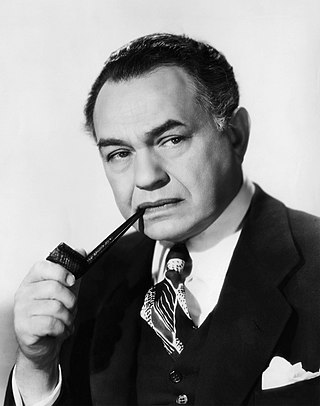
Edward G. Robinson was a Romanian-American actor of stage and screen, who was popular during Hollywood's Golden Age. He appeared in 30 Broadway plays and more than 100 films during a 50-year career and is best remembered for his tough-guy roles as gangsters in such films as Little Caesar and Key Largo. During his career, Robinson received the Cannes Film Festival Award for Best Actor for his performance in House of Strangers.

Key Largo is a 1948 American film noir crime drama directed by John Huston and starring Humphrey Bogart, Edward G. Robinson and Lauren Bacall. The supporting cast features Lionel Barrymore and Claire Trevor. The film was adapted by Richard Brooks and Huston from Maxwell Anderson's 1939 play of the same name. Key Largo was the fourth and final film pairing of actors Bogart and Bacall, after To Have and Have Not (1944), The Big Sleep (1946), and Dark Passage (1947). Claire Trevor won the 1948 Best Supporting Actress Academy Award for her portrayal of alcoholic former nightclub singer Gaye Dawn.

Shaft's Big Score! is a 1972 American blaxploitation action-crime film starring Richard Roundtree as private detective John Shaft. It is the second entry in the Shaft film series, with both director Gordon Parks and screenwriter Ernest Tidyman reprising their roles from the first film. Moses Gunn and Drew Bundini Brown also return from the previous film, alongside new appearances from acting veterans Joseph Mascolo, Julius Harris and Joe Santos. Composer Isaac Hayes turned down an offer to score the film, so Parks, also a musician, composed and performed the score himself.
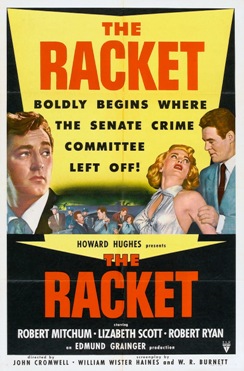
The Racket is a 1951 black-and-white film noir drama directed by John Cromwell with uncredited directing help from Nicholas Ray, Tay Garnett, and Mel Ferrer. The production features Robert Mitchum, Lizabeth Scott, Robert Ryan, and William Conrad. Future Perry Mason regular cast members William Talman and Ray Collins appear in key roles.
The Irish Mob is a usually crime family-based ethnic collective of organized crime syndicates composed of primarily ethnic Irish members which operate primarily in Ireland, the United States, the United Kingdom, Canada and Australia, and have been in existence since the early 19th century. Originating in Irish-American street gangs – famously first depicted in Herbert Asbury's 1927 book, The Gangs of New York – the Irish Mob has appeared in most major U.S. and Canadian cities, especially in the Northeast and the urban industrial, including Boston, New York City, Philadelphia, Pittsburgh, Baltimore, Cleveland, and Chicago.

The Mob is a 1951 American film noir crime-thriller produced by Columbia Pictures, directed by Robert Parrish, and starring Broderick Crawford. The screenplay, which was written by William Bowers, is based on the novel Waterfront by Ferguson Findley.

The Amazing Dr. Clitterhouse is a 1938 American crime film directed by Anatole Litvak and starring Edward G. Robinson, Claire Trevor and Humphrey Bogart. It was distributed by Warner Bros. and written by John Wexley and John Huston, based on the 1936 play The Amazing Dr. Clitterhouse, the first play written by short-story writer Barré Lyndon, which ran for three months on Broadway with Cedric Hardwicke after playing in London.
In the late 19th and early 20th centuries, African-American organized crime emerged following the first and second large-scale migration of African Americans from the South to major cities of the Northeast, Midwest, and later the West Coast. In many of these newly established communities and neighborhoods, criminal activities such as illegal gambling, speakeasies and bootlegging were seen in the post-World War I and Prohibition eras. Although the majority of these businesses in African-American neighborhoods were operated by African Americans, it is often unclear the extent to which these operations were run independently of the larger criminal organizations of the time.
Manpower is a 1941 American crime melodrama directed by Raoul Walsh and starring Edward G. Robinson, Marlene Dietrich, and George Raft. The picture was written by Richard Macaulay and Jerry Wald, and the supporting cast features Alan Hale, Frank McHugh, Eve Arden, Barton MacLane, Ward Bond and Walter Catlett.
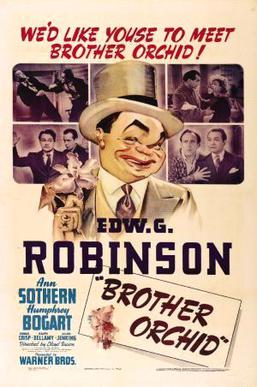
Brother Orchid is a 1940 American crime/comedy film directed by Lloyd Bacon and starring Edward G. Robinson, Ann Sothern and Humphrey Bogart, with featured performances by Donald Crisp, Ralph Bellamy and Allen Jenkins. The screenplay was written by Earl Baldwin, with uncredited contributions from Jerry Wald and Richard Macauley, based on a story by Richard Connell originally published in Collier's Magazine on May 21, 1938. Prior to the creation of the movie version of Connell's story, a stage adaptation was written by playwright/novelist Leo Brady. The script was originally produced at Catholic University of America in Washington, DC.
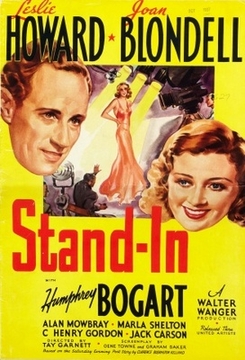
Stand-In is a 1937 American screwball comedy directed by Tay Garnett and starring Leslie Howard, Joan Blondell and Humphrey Bogart. The film's screenplay was written by Gene Towne and C. Graham Baker from a story by Clarence Budington Kelland. It was produced by independent producer Walter Wanger, and released by United Artists. The film is set in Hollywood and satirizes the film industry during the classical Hollywood era.
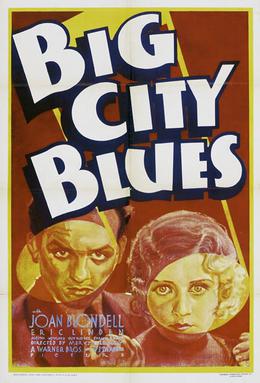
Big City Blues is a 1932 American pre-Code drama film directed by Mervyn LeRoy and distributed by Warner Bros. The film is based on the play New York Town by Ward Morehouse and stars Joan Blondell and Eric Linden, with uncredited early appearances by Humphrey Bogart and Lyle Talbot.
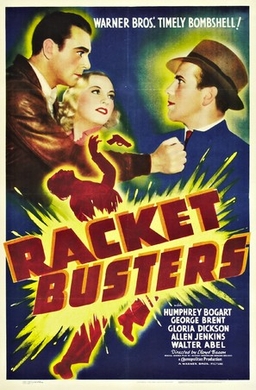
Racket Busters is a 1938 American film directed by Lloyd Bacon. The film is stars Humphrey Bogart and George Brent and is about a crime in the trucking industry.

Johnny Broderick was a New York City Police Department detective who became known in the 1920s and 1930s as one of the city's toughest officers, patrolling the Broadway Theater District and policing strikes as head of the NYPD's Industrial Squad, sometimes personally beating gangsters and suspects.












